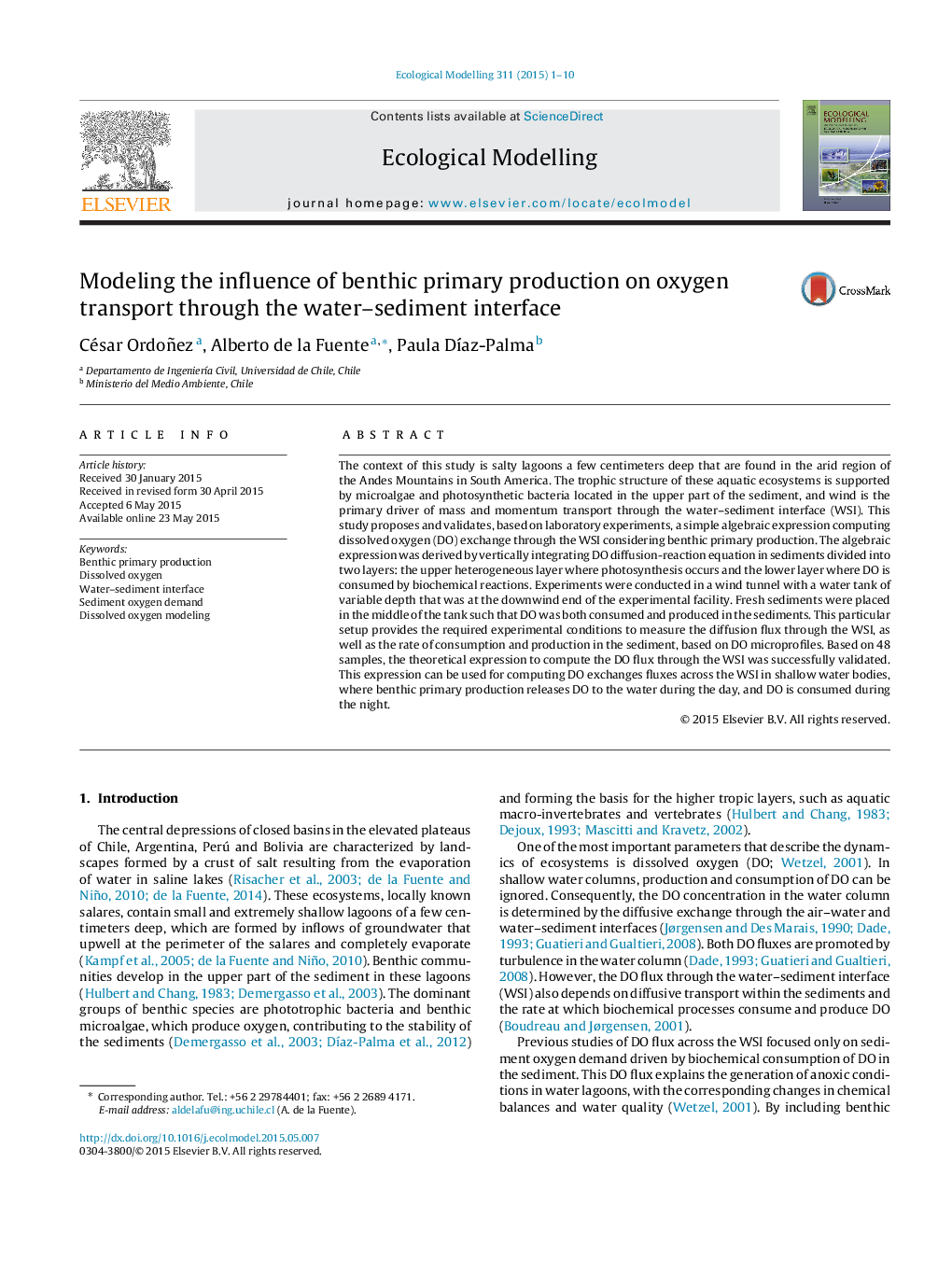| Article ID | Journal | Published Year | Pages | File Type |
|---|---|---|---|---|
| 4375631 | Ecological Modelling | 2015 | 10 Pages |
•We propose a model for dissolved oxygen exchange at the water–sediment interface.•Processes in the water- and the sediment-side of the water–sediment interface.•Sediment-side: diffusion, production and biochemical consumption are considered.•Water-side: turbulent diffusion across the diffusive boundary layer is considered.•Model was validated with laboratory observations.
The context of this study is salty lagoons a few centimeters deep that are found in the arid region of the Andes Mountains in South America. The trophic structure of these aquatic ecosystems is supported by microalgae and photosynthetic bacteria located in the upper part of the sediment, and wind is the primary driver of mass and momentum transport through the water–sediment interface (WSI). This study proposes and validates, based on laboratory experiments, a simple algebraic expression computing dissolved oxygen (DO) exchange through the WSI considering benthic primary production. The algebraic expression was derived by vertically integrating DO diffusion-reaction equation in sediments divided into two layers: the upper heterogeneous layer where photosynthesis occurs and the lower layer where DO is consumed by biochemical reactions. Experiments were conducted in a wind tunnel with a water tank of variable depth that was at the downwind end of the experimental facility. Fresh sediments were placed in the middle of the tank such that DO was both consumed and produced in the sediments. This particular setup provides the required experimental conditions to measure the diffusion flux through the WSI, as well as the rate of consumption and production in the sediment, based on DO microprofiles. Based on 48 samples, the theoretical expression to compute the DO flux through the WSI was successfully validated. This expression can be used for computing DO exchanges fluxes across the WSI in shallow water bodies, where benthic primary production releases DO to the water during the day, and DO is consumed during the night.
